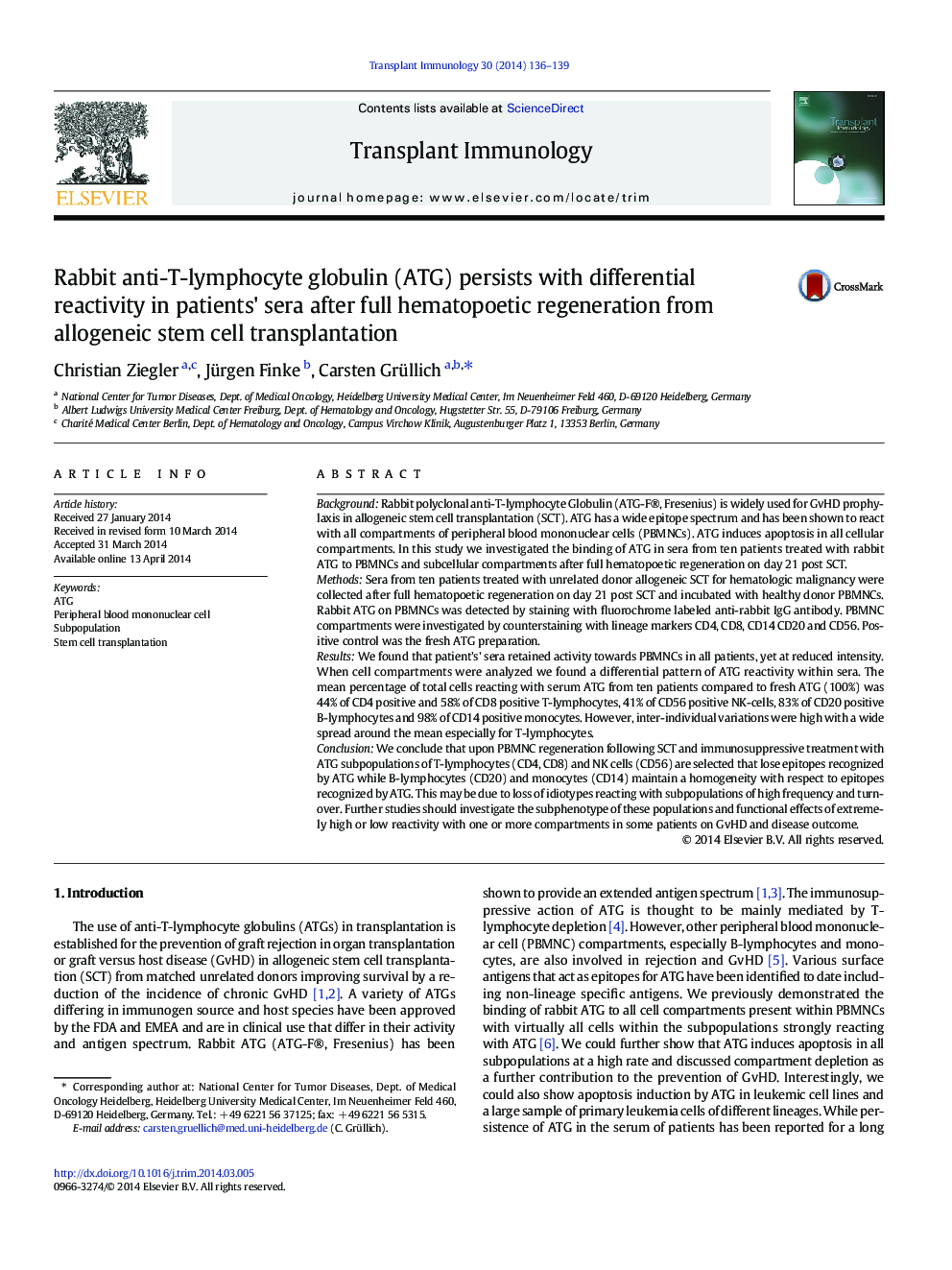| Article ID | Journal | Published Year | Pages | File Type |
|---|---|---|---|---|
| 3392071 | Transplant Immunology | 2014 | 4 Pages |
•Anti T-lymphocyte globulin (ATG) persists in serum post stem cell transplantation.•Serum ATG reacts with whole PBMNCs.•Serum ATG binding to PBMNC cell compartments varies strongly compared to fresh ATG.•Serum ATG of most patients binds to majority of CD20 + and CD14 + populations.•Serum ATG of most patients binds to small subsets of CD4 +, CD8 +, and CD56 + populations.
BackgroundRabbit polyclonal anti-T-lymphocyte Globulin (ATG-F®, Fresenius) is widely used for GvHD prophylaxis in allogeneic stem cell transplantation (SCT). ATG has a wide epitope spectrum and has been shown to react with all compartments of peripheral blood mononuclear cells (PBMNCs). ATG induces apoptosis in all cellular compartments. In this study we investigated the binding of ATG in sera from ten patients treated with rabbit ATG to PBMNCs and subcellular compartments after full hematopoetic regeneration on day 21 post SCT.MethodsSera from ten patients treated with unrelated donor allogeneic SCT for hematologic malignancy were collected after full hematopoetic regeneration on day 21 post SCT and incubated with healthy donor PBMNCs. Rabbit ATG on PBMNCs was detected by staining with fluorochrome labeled anti-rabbit IgG antibody. PBMNC compartments were investigated by counterstaining with lineage markers CD4, CD8, CD14 CD20 and CD56. Positive control was the fresh ATG preparation.ResultsWe found that patient's' sera retained activity towards PBMNCs in all patients, yet at reduced intensity. When cell compartments were analyzed we found a differential pattern of ATG reactivity within sera. The mean percentage of total cells reacting with serum ATG from ten patients compared to fresh ATG (100%) was 44% of CD4 positive and 58% of CD8 positive T-lymphocytes, 41% of CD56 positive NK-cells, 83% of CD20 positive B-lymphocytes and 98% of CD14 positive monocytes. However, inter-individual variations were high with a wide spread around the mean especially for T-lymphocytes.ConclusionWe conclude that upon PBMNC regeneration following SCT and immunosuppressive treatment with ATG subpopulations of T-lymphocytes (CD4, CD8) and NK cells (CD56) are selected that lose epitopes recognized by ATG while B-lymphocytes (CD20) and monocytes (CD14) maintain a homogeneity with respect to epitopes recognized by ATG. This may be due to loss of idiotypes reacting with subpopulations of high frequency and turnover. Further studies should investigate the subphenotype of these populations and functional effects of extremely high or low reactivity with one or more compartments in some patients on GvHD and disease outcome.
